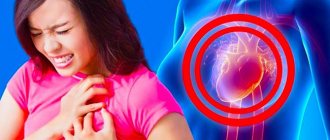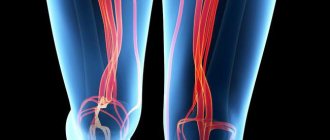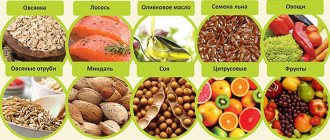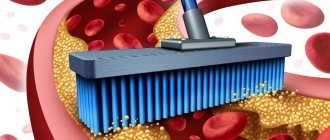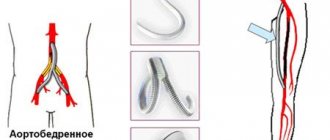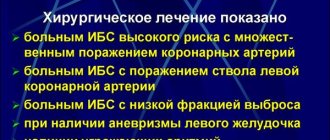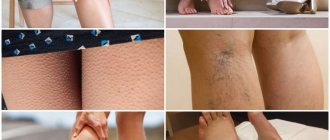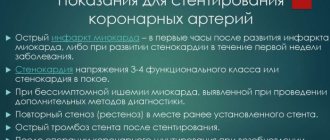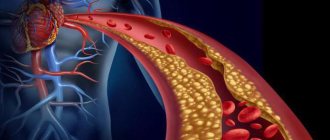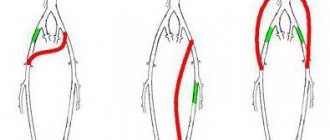Almost all diseases of the cardiovascular system are directly or indirectly related to unhealthy diet. The main “mistakes” that patients with such diseases make are including in their diet excessive amounts of protein and foods rich in animal fats.
Most often, this leads to the formation of atherosclerotic plaques in the vascular system at the age of 40–50. They, in turn, worsen the speed of blood flow, increase the chance of developing a stroke or heart attack, varicose veins, and thrombosis.
Numerous studies confirm that nutrition directly affects the health of the cardiovascular system.
But which foods in this regard are most harmful to the health of our blood vessels? Which of them should be completely abandoned, and which should be limited in the daily diet?
Causes of clogged blood vessels
Atherosclerosis is a natural aging process of blood vessels that develops in all people with age. Vessels become clogged faster due to impaired fat metabolism, increased cholesterol levels in the blood, the development of viral and bacterial infections, heredity, and too high blood pressure.
Also, the functioning of capillaries can malfunction due to diabetes mellitus, impaired carbohydrate metabolism, obesity, a sedentary lifestyle, and consumption of large amounts of animal fats.
You need to find out how to clean the blood vessels from your doctor by visiting him and finding out the cause of their blockage.
Surgical intervention
If the methods described above are unsuccessful, surgery helps. Before making a final decision on surgery, angiography (a method for diagnosing blood vessels, a type of X-ray examination) is prescribed. The condition of the coronary arteries is studied using coronary angiography. Here are the main types of interventions:
- balloon angioplasty (the narrowed section of the artery is inflated using an inserted balloon);
- coronary artery bypass grafting (the saphenous vein is inserted to bypass the affected area);
- reconstructive operations (restorative effects on the arteries delivering blood to the brain);
- small intestinal bypass (the idea is to prevent cholesterol from being absorbed into the blood);
- extracorporeal methods (correction of lymph and blood exchange).
In what situations are capillaries cleaned?
The following people definitely need to cleanse their blood vessels:
- having bad habits (smoking or drinking alcohol);
- •overweight;
- •with high blood pressure;
- •who have elevated cholesterol levels in their blood;
- •who suffer from atherosclerosis.
For severe headaches, dizziness, constant fatigue and a broken state, it is also necessary to cleanse the blood vessels.
If you do not cleanse the blood vessels, they may become blocked, which is dangerous to human life. Since in case of acute vascular insufficiency caused by the formation of thrombosis, other internal organs may also suffer.
Changing lifestyle, work and rest schedules
To prolong life, you need to completely change your mode of existence. Good sleep, walks, exercise and the absence of bad habits are the key to your health. There are other recommendations:
- Drinking water should be filtered.
- Remove acidic drinks from your diet.
- Eat a clove of garlic every day.
- Sleep mode - at least 8 hours.
- Stay away from stress.
- Use plant enzymes in your daily life.
- Follow the diet described above.
Which doctor should I contact?
To cleanse blood vessels from cholesterol, consult a cardiologist. You should also consult a nutritionist, especially if you are overweight.
If the veins are damaged, additional consultation with a vascular surgeon and phlebologist will be required. If the patient has heart disease and obesity, you need to visit an endocrinologist. If the capillaries of the brain are damaged, a neurologist will help.
It is important to remember that before cleaning the vessels, you must undergo a medical examination, visiting a cardiologist, vascular surgeon, nutritionist, phlebologist, endocrine and other experienced specialists.
Methods for treating capillaries
You can use different methods to clean vessels. In some cases, it is enough to change your diet, in others you will need to undergo a course of medication. But experts recommend cleaning blood vessels using an integrated approach, which recommends:
- Change your lifestyle.
- Take medications.
- Use folk remedies.
- In severe cases, perform surgery.
The tactics of action should be developed together with the doctor.
Lifestyle change
A healthy lifestyle is beneficial for all people, and especially for patients with atherosclerosis and vascular diseases. Doctors strongly recommend:
- follow the rules of healthy eating;
- •normalize weight;
- •maintain regular physical activity;
- •quit smoking;
- •control stress.
In order to follow the rules of a healthy diet, it is recommended to adhere to the principles of the Mediterranean diet, the diet of which is considered balanced and varied.
The Mediterranean diet reduces the level of bad cholesterol in the blood and also successfully cleanses blood vessels. Basic rules of dietary nutrition:
- Try to eat more plant-based foods, whole grains, vegetables and fruits, legumes, and nuts.
- To saturate the body with complete animal protein, it is recommended to moderately feast on lean poultry and fish fillets.
- Instead of cooking fats, butter and lard, use extra virgin olive oil for cooking.
- Use spices and herbs instead of salt to season your dishes.
- The Mediterranean diet recommends drinking natural dry red wine daily. The drink can be drunk in small portions during lunch and dinner. Men are allowed to drink three glasses of wine per day, and women – two glasses of wine.
During the day, it is recommended to drink 1.5 - 2 liters of plain non-carbonated clean water.
It is forbidden to quench your thirst with soda, lemonade, drinks with sugar, compotes and juices from the store. Fresh fruit juices are allowed to be consumed not as a drink, but as a separate meal. The Mediterranean diet allows for one cup of coffee per day.
The diet does not have a strict menu, so you can enjoy a variety of dishes every day. For example, a diet for one day could be like this:
- •have breakfast with fresh peaches, a slice of fresh bread and wash down your meal with a glass of water;
- •for second breakfast, eat a salad made from sea fish and olives, dressed with olive oil, drink a couple of glasses of water;
- •dine on bell peppers stuffed with rice, meat and tomatoes; you can eat a few slices of bread and drink a couple of glasses of wine;
- •have dinner with a salad of fresh vegetables, boiled fish and a glass of wine.
To create the right dietary menu to cleanse blood vessels, you can go to a nutritionist.
The Mediterranean diet helps cleanse blood vessels and also helps to gradually lose excess weight.
To maintain regular physical activity, it is recommended to do morning exercises every day and try to spend enough time in the fresh air. It is useful to jog in the park, ride a bike, and visit the pool.
Since smoking contributes to the accumulation of harmful substances in the human body, it is recommended to quit smoking. By getting rid of a bad habit, you can partially help your arteries clear of bad cholesterol and other negative accumulations.
It is important to try to avoid stressful situations when cleansing blood vessels. If your work involves constant stress, try not to take everything to heart, and also look for the positive in any situation. Replace stress with positive emotions, because it negatively affects blood vessels and human health in general.
Drug treatment
Cleaning of blood vessels with medications is carried out only in very serious situations:
- coronary heart disease, obliterating peripheral artery disease, stroke;
- diabetes;
- •high levels of cholesterol in the blood.
There are the following groups of drugs that successfully cleanse blood vessels:
- Statins reduce the production of cholesterol in the liver. Drugs of this group are prescribed at the initial stage of metabolic disorders. When treated with statins, liver function may decrease and muscle weakness may occur. Vessel cleansing is carried out with Lipitor, Crestor, Zocor and other drugs.
- To correct fat metabolism, fibrates are prescribed. They help increase good cholesterol and also lower triglycerides. Sometimes, as a side effect, the skin may begin to itch, nausea and a skin rash may appear. Therapy is carried out with Trikor, Clofibrate, Atromide.
- For successful oxidation processes, nicotinic acid preparations are prescribed: Niaspan or Nikolar. They contribute to a rapid decrease in blood cholesterol and triglycerides. Itching and redness of the skin and headache may occur.
- Drugs that remove bile acid, when interacting with bile, prevent harmful cholesterol from entering the blood. To cleanse blood vessels, they use Welhol, Questran, and Kolestide. Side effects may include stomach upset and bloating.
- Medicines that contain Ginkgo Biloba: for example, Bilobil, Gingium.
Additionally, the doctor may recommend taking vitamins A, B, C, E, zinc and calcium, and also prescribe medications that:
- •reduce blood pressure levels;
- •reduce blood glucose;
- •prevent the formation of blood clots, which can lead to myocardial infarction or stroke;
- •prevent inflammation.
Before cleaning blood vessels with drugs, the patient must undergo a comprehensive examination of the body. After the results of the study, the doctor selects a drug for the procedure and describes an individual regimen for its use.
Therapy is carried out until the level of cholesterol in the blood normalizes. It must be borne in mind that without maintaining a healthy lifestyle, no drug therapy can help a person.
Cleansing with folk remedies
Many people try to cleanse blood vessels at home not only with the help of medications, but also with traditional medicine. However, the effectiveness and safety of these methods is questioned by most doctors. Despite the belief that herbal remedies are harmless, they can interact with the medications used, unpredictably affecting their effect.
In order not to harm the body, and also to learn how to use folk remedies correctly, you should definitely consult a doctor.
Arterial bypass surgery
There are surgical methods to cleanse blood vessels, such as bypass surgery and stenting.
Bypass surgery allows you to create a shunt that bypasses a narrowed section of a blood vessel. Thanks to this, blood flow through the damaged artery is resumed. Bypass surgery is performed for coronary heart disease, as well as for clogged arteries of the lower extremities.
Before cleaning blood vessels through surgery, you need to undergo preparation. To do this, the patient is given:
- Duplex ultrasound scanning, which allows you to see the condition of the lumen of the blood vessel, whether there are plaques, blockages, and also at what speed the blood flows through the veins.
- Magnetic resonance angiography, which allows one to examine the lumen of blood vessels “in layers.”
- Angiography, which helps to figure out exactly where the blockage of the artery occurred in order to successfully remove it.
If there are problems with the heart, this organ is also examined.
Bypass surgery is performed using local or general anesthesia. Bypass surgery on the legs allows you to take the saphenous vein of the thigh as a bypass, which is most often not affected by atherosclerosis.
The surgeon makes an incision in the affected vein, small incisions in the places where the shunt will be sutured. In the designated places, the shunt is sutured to the artery at its ends. Thanks to this operation, blood flow in the affected area is restored.
In order to check the correct installation of the shunt, angiography and duplex ultrasound scanning are performed after the operation. A week after bypass surgery, the surgeon removes the sutures and, if the wound heals successfully, can discharge the patient home.
Arterial stenting
Stenting is performed as follows:
- A catheter with a stent is installed in the femoral artery.
- Then the catheter is moved to the desired area and a stent is installed, forming the desired width of the artery.
- The catheter is removed, and the stent remains in place to ensure normal blood flow.
The operation is performed under local anesthesia for 1 – 3 hours. If necessary, during the operation the doctor can install several stents at once.
After stenting, the patient remains in the hospital for a week. After discharge home, the doctor prescribes rehabilitation measures.
Diet
To consolidate the therapeutic effect, a strict diet is followed. Eliminate fatty, fried and salty foods from your diet. These products contribute to the deposition of cholesterol on the walls of blood vessels. And salt makes it difficult to remove harmful substances from the body. Also prohibited are coffee, sugar, smoked foods, processed foods, fast foods and dairy products.
Vegetables and fruits should come first. Use meat with caution and only dietary meat. Lean fish and seafood are allowed. Drinking plenty of water is strongly recommended during treatment.
When should you not clean blood vessels?
Cleaning blood vessels is prohibited during breastfeeding or pregnancy. Also, the procedure cannot be performed without a doctor for people with chronic kidney disease and inflammatory processes of the digestive system. Therefore, before clearing the arteries of accumulated deposits, it is recommended to consult a doctor to determine the state of your health. If necessary, before the cleansing procedure, it will be necessary to carry out therapy for the identified diseases.
Cleaning blood vessels is important for the successful functioning of the entire human body. This must be done strictly following all doctor's recommendations. Especially if cleansing is planned with medications or folk remedies. A diet can be compiled together with an experienced nutritionist who understands the rules of cleansing the body.
Cleansing with surgery
You can start cleaning with the help of traditional medicine recipes, or adjusting your diet, and also for more complex pathologies in the blood vessels of the heart, you need to turn to drug therapy, and apply surgical cleansing:
- Transluminal angioplasty of coronary vessels . This is a method of inserting a balloon into the vascular lumen. With the help of this balloon, the lumen expands and does not interfere with normal blood flow in the coronary arteries. This method is minimally invasive;
- Aortic-coronary bypass surgery . This is the construction of a bypass highway in the bloodstream at the site of development of an atherosclerotic plaque. The blood begins to circulate along the bypass channel, and its movement returns to normal. With restored blood supply, the performance of the heart organ is improved. The operation is performed to prevent the development of coronary insufficiency and myocardial infarction in systemic atherosclerosis.
- Minimally invasive stenting method . Through a puncture on the femoral artery, a stent is inserted into the coronary artery, which expands the arterial lumen and, with the help of a mesh, prevents it from narrowing and rupturing;
- Cleaning the vessels of the heart organ using laser therapy . The laser eliminates hypoxia of the heart organ and coronary vessels and improves blood flow in them. Using a laser beam, atherosclerotic deposits on the arteries of the heart are cleared. With this method of cleansing the cardiovascular system, there is a minimal amount of negative impact on the body. Laser therapy of cardiac vessels can be used at any age, even in old age.
Coronary artery bypass surgery
